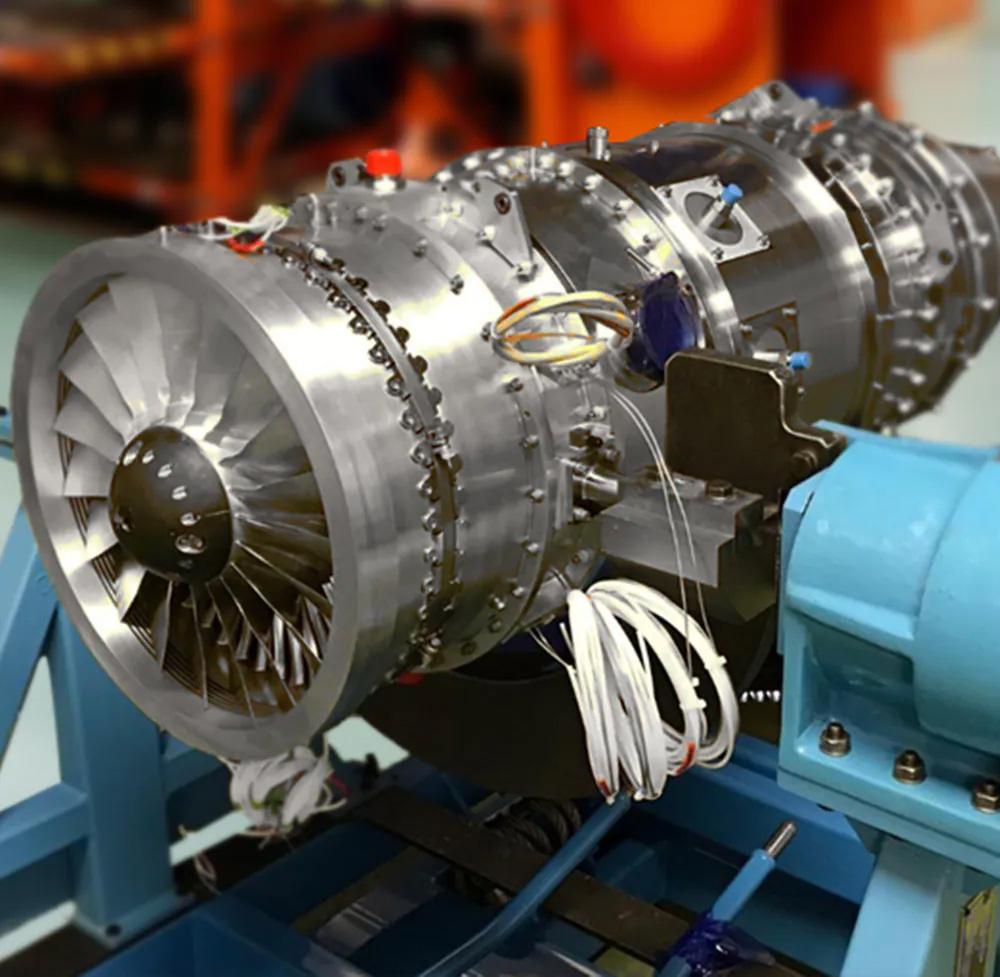
FARNBOROUGH–Rolls-Royce engineers have used digital tools and rapid manufacturing techniques to develop an entirely new turbofan engine concept from scratch in just 18 months.
The company’s Orpheus powerplant–displayed publicly at the Farnborough Airshow for the first time–was fully developed during the height of the COVID-19 pandemic in the spring of 2020 and spooled up for the first time at the beginning of 2022. Built using what the OEM calls an agile approach, Orpheus was produced twice as fast as other engines and using just one-third of the engineering resources.
The project will inform the UK’s Future Combat Air System Technology Initiative (FCAS TI) as well as Rolls-Royce’s own work on a family of small low-cost gas turbines that could power uncrewed aircraft systems and other small aircraft.
As part of the work Rolls-Royce conducted with 30 small and medium-sized enterprises, it adopted new manufacturing techniques, including additive layer manufacturing and novel approaches to casting to shorten the long lead times that can often pace engine development programs.
“There was a shift in mindset in the team’s approach to risk,” said John Wardell, director of future defense programs at Rolls-Royce. “For an engine of this scale, the actual manufacture of the components is cheaper ... so it’s cheaper to build a part and test it rather than spend months analyzing it. We were going back to the roots of aerospace ... for this program. Nothing was off limits.”
The result was a two-shaft “minimum viable product” engine that after a few tweaks was spooled up successfully. And the results have been repeatable. A second engine is already in testing and a third is being built.
“The key output of this was how quickly can you get to a product,” Wardell said. The next steps could be to optimize the powerplant through a spiral development to deliver a high-performing, flightworthy engine. But Wardell notes there are no current plans to do so.
“As we look to a future engine, that’s when we start tailoring those requirements, so if we need a high-performing engine we will look at exotic materials.”
Rolls-Royce says the Orpheus work could enable aerospace OEMs to move away from using off-the-shelf subsystems for prototype vehicles and enable the rapid development of bespoke engines. Rolls-Royce believes a family of such powerplants could power standoff weapons and uncrewed aircraft systems, as well as provide power to directed energy weapons and support thermal management systems.
